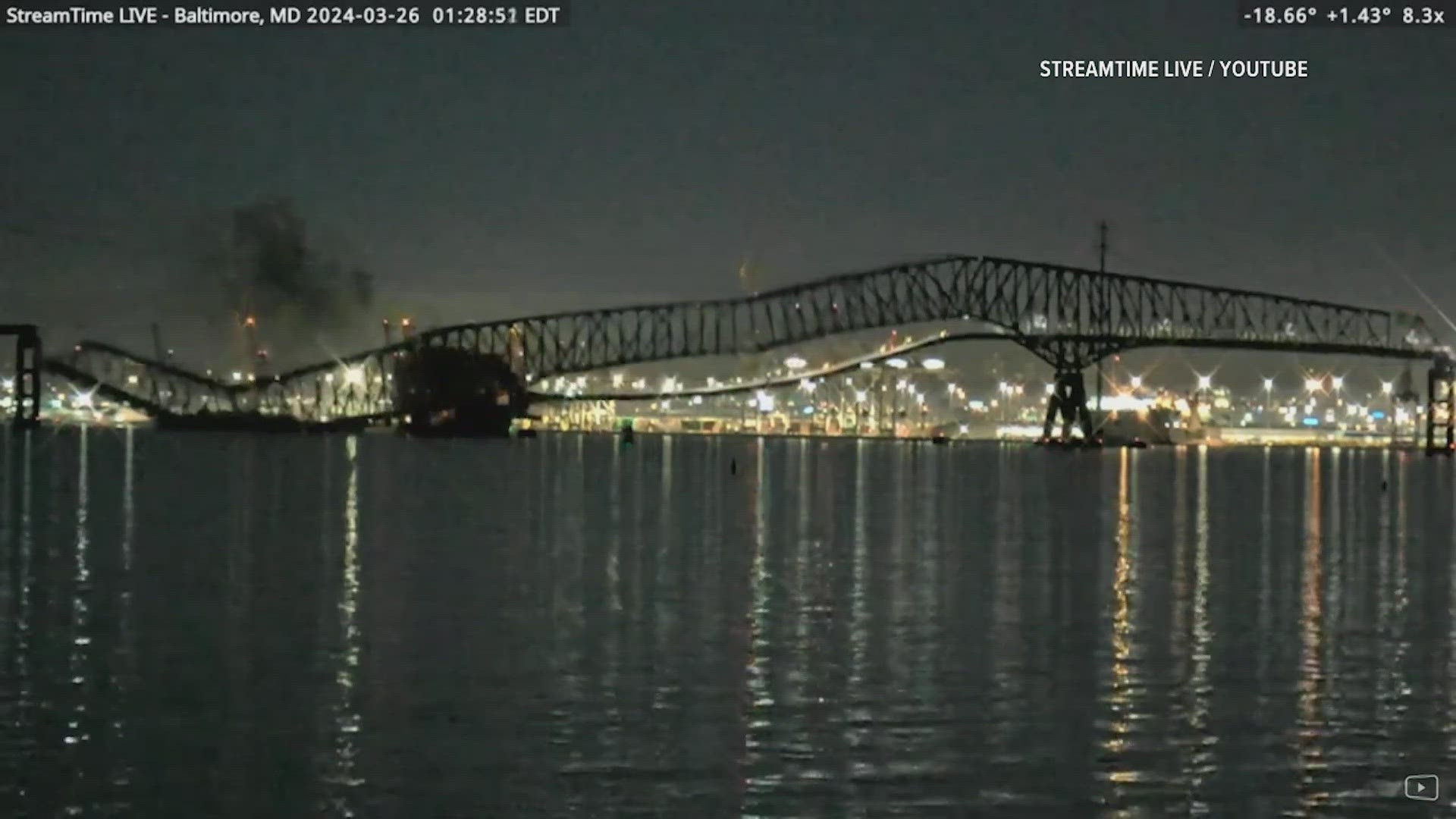SEATTLE — After a container ship crashed into a support for the Francis Scott Key Bridge early Tuesday morning in Baltimore, causing the bridge to collapse, officials said the vessel had lost power and control.
"Our hearts go out to our colleagues in Baltimore," said Washington State Department of Transportation Communications Manager RB McKeon.
In Washington state, the Puget Sound is no stranger to big vessels. Which may prompt the question: What’s the likelihood that something equally as tragic could happen here?
"Safety is paramount. It's top of mind when you're in the transportation and infrastructure industry," said McKeon.
If a vessel were to lose power, the Coast Guard would likely know about it and take quick action. In downtown Seattle, the Vessel Traffic Center at Pier 36 is just one of 10 U.S. Coast Guard operated centers across the nation. Much like Air Traffic Control, the work done at the center acts as a safeguard to prevent tragedies like the one in Maryland.
Authorities oversee potential vessel emergencies by using a technology called Automatic Identification System, or AIS. It's a radar that includes a symbol and name for every big ship in range, and shows their speed and direction.
"With this information, you can call any ship over VHF radiotelephone by name, rather than by 'ship off my port bow' or some other imprecise means," according to the U.S. Coast Guard's navigation site. "You can send to the ship, or receive from it, short safety-related email messages."
The Coast Guard also works closely with WSDOT, according to McKeon.
"We're in those constant communication loops with folks who manage, manage and monitor that [maritime] traffic," she said.
Mckeon said WSDOT is often working on state bridges to ensure structural safety. She said this helps keep drivers on bridges safe.
"We do have a robust inspection program," she said.
Unlike the container ship in the Baltimore tragedy, Washington does not have ocean-going container ships that travel under bridges to access main terminals, according to Eric ffitch, the executive director of the Washington Public Ports Association.
However, smaller cargo ships do travel under bridges on the Columbia River and even the Tacoma Narrows Bridge to access the Port of Olympia.
Washington has had bridges collapse in its recent history; even if dissimilar in cause to the Baltimore collapse. The Skagit River Bridge collapsed in 2013 due to an oversized load on a vehicle traveling its course. The floating bridge, I-90, collapsed into Lake Washington in 1990.
Going forward, Mckeon said WSDOT will be looking closely at what the investigation uncovers in Baltimore, to see if the department can benefit, as a whole, from the lessons learned.
"If there are precautions, or improvements that they can take in their states, we can implement those," said McKeon.
For decades. the U.S. Coast Guard has also worked cooperatively with the Canadian Coast Guard in preventing vessel emergencies from their Vessel Traffic Center in Seattle.

